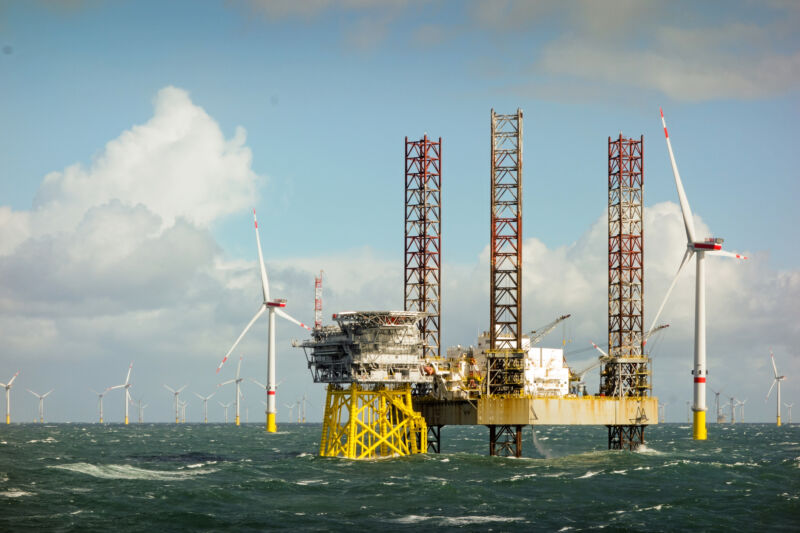
Shortly after taking office, President Joe Biden announced a major effort to jump-start the offshore wind industry in the US, with the stated goal of going from roughly zero to 30 GW of capacity before the decade is over. To that end, the Biden administration has given final approval to Vineyard Wind near Massachusetts and has been involved with three large wind projects that will be sited off New Jersey.
But even with the massive size of those projects, the US would be left with about 4 GW of offshore wind—nowhere close to the 30 GW goal. So on Wednesday, Interior Secretary Deb Haaland laid out an ambitious roadmap that will see all coastal areas of the contiguous 48 states evaluated for leasing, with lease deals being completed before the end of Biden's term in 2024.
A multi-year process
At the federal level, the leasing process is far more involved than simply finding a site that has strong, consistent winds. Federal regulators have to consider environmental impacts, conflicts with other users, damage to historical sites, and the needs of any Native American groups in the area, among other factors. It's only after these hurdles are overcome that the lease sale can begin.
So far, the Department of the Interior has completed that process for just a few areas: the ones off of Massachusetts and New Jersey described earlier, as well as two sites off of Virginia, one of which has a 2.6 GW project in the works. But even combined, these projects represent a relatively small portion of the US coastline.
There are two other areas where the leasing process has started. One is called the New York Bight, which includes sites north of New York Harbor along Long Island, with an estimated potential of over 7 GW of capacity. The Department of the Interior announced that it intended to start the lease sale back in June. The second area is called Carolina Long Bay and includes coastal areas near Myrtle Beach, South Carolina, north toward Wilmington, North Carolina. Lease sales there have already started, and the Department of the Interior is considering opening up further sites adjacent to those.
But the department is interested in expanding offshore wind significantly. To that end, it is currently in the process of reviewing sites in Northern and Central California and expects to complete the study either late this year or early next. Also under review is the Gulf of Mexico, with leasing on track for late next year. Further out are other areas in the mid-Atlantic (primarily Virginia and Maryland) and Oregon, with lease sales expected in 2023. Finally, the Gulf of Maine will see the study period wrapped up in 2023, with lease sales likely in 2024.
Post-lease
Signing the lease is nowhere close to the end of the process. Offshore wind developers will need to have their plans for the lease site approved before starting construction. The Department of the Interior's Bureau of Ocean Energy Management indicates that it is currently reviewing nine construction and operations plans for existing lease sites, and it expects to complete the reviews of those, plus another six that haven't been submitted yet, by 2025. That will mean roughly 19 GW of capacity approved for construction.
Once the construction-support facilities are in place—something that is still a work in progress in the US—even large offshore wind farms can often be completed in two to four years. So in order to reach the Biden administration's goal of 30 GW by 2030, another 11 GW of capacity will need to be approved by 2026.
The Biden administration is cutting things fairly close. In its favor, it's likely that experience with the leasing and permitting process for the first few wind farms will help cut some of the time required for future projects. And it's probable that the attempts made to block the first few offshore wind farms in court, should they continue to fail, will set precedents that limit the legal hassles these projects face.
The largest risk appears to be the election of an administration that displays the sort of antipathy toward wind power shown by former President Trump.
reader comments
290